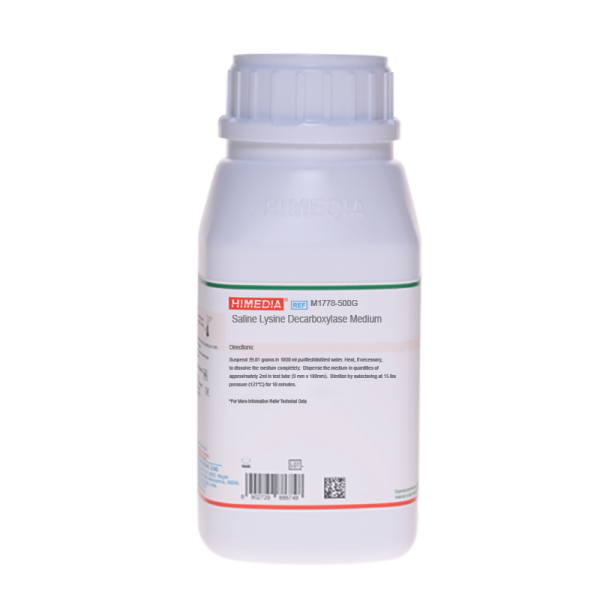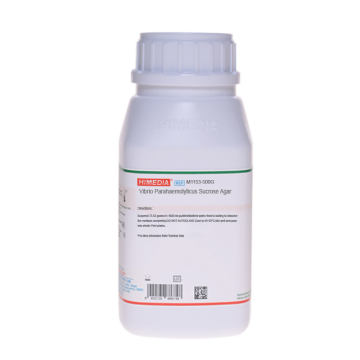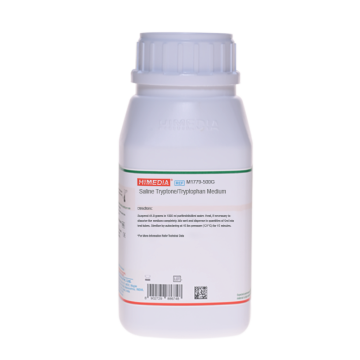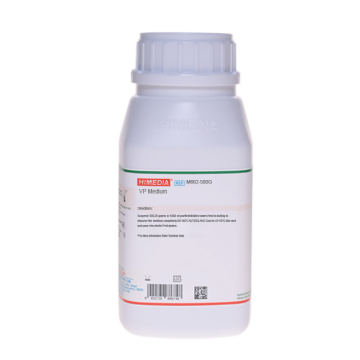 Your enquiry has been submitted
Your enquiry has been submitted
Saline Lysine Decarboxylase Medium
Saline Lysine Decarboxylase Medium is recommended for isolation and identification of Vibrio parahaemolyticus on the basis of lysine decarboxylation.
Composition**
| Ingredients | Gms / Litre |
|---|---|
| Yeast Extract | 3.000 |
| L-Lysine monohydrochloride | 5.000 |
| Glucose | 1.000 |
| Sodium chloride | 30.000 |
| Bromocresol purple | 0.015 |
pH after sterilization ( at 25°C) 6.80
**Formula adjusted, standardized to suit performance parameters
Directions
Suspend 39.01 grams in 1000 ml distilled water. Heat, if necessary, to dissolve the medium completely. Dispense the medium in quantities of approximately 2ml in test tube (9 mm x 180mm). Sterilize by autoclaving at 15 lbs pressure (121°C) for 10 minutes.
Principle And Interpretation
Vibrio parahaemolyticus is a halophilic estuarine organism. This organism can be isolated from a variety of sea food product and marine environments. The organism, when isolated from fresh sea food, is usually found in low number and is sensitive to refrigeration and heat.
Saline Lysine Decarboxylase Medium is recommended by ISO 8914:1990 (1) for isolating and identification of Vibrio parahaemolyticus from food and animal feed.
Yeast extract provide nitrogen compounds, growth factors essential for the growth of Vibrio parahaemolyticus. High sodium chloride content of the medium provides conditions that facilitate easy growth of Vibrio parahaemolyticus.
During the initial stages of incubation, fermentation of glucose by the organisms, with acid production results in a colour change of indicator to yellow. On further incubation, if L-Lysine is decarboxylated to cadaverine, there will be an alkaline reaction and indicator colour will then change to purple. If colour remains yellow, the decarboxylase reaction is negative.
Yeast extract provide essential growth nutrients. Glucose is the fermentable carbohydrate and bromocresol purple is the pH indicator.
Inoculate, suspected colony from Saline Nutrient Agar (M1776), just below the surface of Saline Lysine Decarboxylase medium and incubate at 35-37ºC for 24 hrs. A purple colour and turbidity, after incubation, indicates a positive reaction.
Quality Control
Appearance Light yellow to greenish yellow homogeneous free flowing powder
Colour and Clarity of prepared medium Purple coloured clear solution forms in tube
Reaction Reaction of 3.9% w/v aqueous solution after sterilization at 25°C. pH : 6.80
Cultural Response Cultural characteristics observed after an incubation at 35-37°C for 18-24 hours.(Inoculated tubes are overlayed with sterile mineral oil).
| Organism | Inoculum (CFU) | Lysine decarboxylation |
|---|---|---|
| Vibrio parahaemolyticus ATCC 17802 | 50-100 | Positive (Purple colour with turbidity) |
Storage and Shelf Life
Store below 30°C in tightly closed container and the prepared medium at 2 - 8°C. Use before expiry date on the label.
Reference
- International Organization for Standardization (ISO),8914:1990,
| Product Name | Saline Lysine Decarboxylase Medium |
|---|---|
| SKU | M1778 |
| Product Type | Regular |
| Physical Form | Powder |
| Origin | Animal Free (Microbial) |
| Packaging type | HDPE |
| References | 1.International Organization for Standardization (ISO),8914:1990, |
| Customized Product Available | No |










